Across the district, schools and departments hosted events to benefit the community, a school, or families making the end of year celebrations a little better for others. They shared these efforts below.
 Booker T. Washington High School for the Performing and Visual Arts
Booker T. Washington High School for the Performing and Visual Arts
Booker T. Angels is an annual event coordinated by the Student Council and the Parent Teacher Student Association at Booker T. Washington High School for the Performing and Visual Arts. Each year, the students, team members, and families of the school adopt five families who need assistance from H.I. Holland Elementary at Lisbon. The Conservatories (academic, dance, music, theatre, visual arts), along with the PTSA, and Student Council have joined efforts to help support our Booker T Angel Families. The party, which included crafts, pizza, and gift giving, took place on Dec. 15 at H.I. Holland Elementary.
David G. Burnet Elementary School
The effort involves giving 19 students in second and third grades a gift of their choice and a gift card as well as other small stocking stuffers before their winter break. The tradition has been in place since 2023 when the students were in kindergarten, first and second grades. Teacher assistant Jesele Perez, who did the first gifting, got assigned again with these students and is doing it again by saving up money of her own, finding sponsors through connections, getting each students’ hobbies and interests. Perez grew up in the same neighborhood as the students, so she knows and has experienced the struggles first-hand on what most low-income families go through during the holidays. She believes that no student should go without a gift during the holidays. With the help of friends who are Dallas ISD graduates, she made it happen and now each and every student in second and third grades will receive a gift and a gift card. Perez and her friends all had fun while working on this project since they knew this is benefitting students that are currently living in the same neighborhood they all grew up in. She hopes this small project positively impacts these students, encourages them to keep up the good work and also give back to the community.
 Henry B. Gonzalez Elementary School
Henry B. Gonzalez Elementary School
The fifth grade is sponsoring a Christmas Pet Food Drive. Toy drives and food drives during this season are common, but those for pets are usual, so the school decided to spread the joy to animal adoption centers.
 Trinity Heights Talented and Gifted Counseling Department
Trinity Heights Talented and Gifted Counseling Department
This year, the school decided to do a canned food drive. We came up with the idea because so many families have had reduced benefits, job loss, and experienced homelessness. The women’s shelter benefitted from our donation of over 500 canned goods.
Special Services 
Listening to KRLD Radio on her way to work, Patricia Ann Washington heard them doing a Radiothon for Make A Wish Foundation. Being a licensed social worker, she is familiar with this organization, so she made a donation.
 Dual Language Department
Dual Language Department
Each year during Christmas, the department hosts the adopt-a-family outreach event. It’s that special time of the year when the department comes together to support and uplift students and their families. These families are new incoming families to the district that enroll through the International Welcome Center.
Biomedical Preparatory at UT Southwestern
We are a choice school that has a unique economic make up. We are 50% economically advantaged and 50% economically disadvantaged. The school decided to start our own version of the angel tree called Kwanzaa Kindness. Our families have the option to be a sponsor or sign up if they need help with gifts during the holiday season. The kindness of our sponsors brings joy and hope to families during this holiday season.
 Victor H. Hexter Elementary School
Victor H. Hexter Elementary School
Hexter continued its tradition to put up an angel tree for families in need.
Albert C. Black Jr. STEAM Academy 
The National Elementary Society students donated 730 canned goods to the For Oak Cliff Community Food Pantry for Thanksgiving and made Veterans Day cards for the veterans at the Dallas VA Medical Center as community service activities. Our cheerleaders marched in the South Oak Cliff Veterans Day parade to the Dallas VA Medical Center that benefited the veterans at the hospital.
 Larry G. Smith Elementary School
Larry G. Smith Elementary School
The school holds a House Food Drive Competition as an initiative designed to encourage schoolwide participation in helping the community while building teamwork and friendly rivalry among the houses. The effort involves collecting non-perishable food items over a set period of time, with each house competing to donate the most. Students and staff work together to promote the drive, bring in items, track totals, and raise awareness about food insecurity. The idea grew out of a desire to combine community service with school spirit. We noticed that students participate more enthusiastically when there’s a sense of teamwork and competition, so we adapted the traditional food drive into a house-based challenge. We also looked at past service projects and identified that food drives had consistently high engagement, making it a perfect fit for a house competition.
The primary beneficiaries are local families in need, who receive the donated food through our partner food bank, Shiloh Terrace Baptist Church. However, the competition also benefits students who gain experience in leadership, organization, and community empathy. It strengthens house identity, encourages collaboration, and promotes awareness of food insecurity.
While the competition has been successful, we did face a few challenges: Ensuring consistent participation: Some houses were initially less engaged, so we added reminders, incentives, and student-led promotions to boost involvement. Coordinating collection points and finding space to store and sort the donations required careful planning.
We developed a system to count items to ensure all houses were judged equally, regardless of the types of items donated. Despite these challenges, the House Food Drive Competition has become a meaningful and motivating way for our school community to make a positive impact.
 Buckner Terrace Montessori
Buckner Terrace Montessori
Our efforts stem from a commitment to serve families in the Buckner Terrace community who experience food insecurity. Through our partnership with the North Texas Food Bank and Children’s Health, we organize regular distributions of food boxes directly from our campus. The idea grew out of conversations with families, staff, and community partners who identified consistent access to healthy food as a major unmet need. By collaborating with established organizations, we are able to provide high-quality, nutritious food in a way that is safe, reliable, and dignified for the families we serve. This initiative benefits children, their families, and individuals in our surrounding neighborhood who face food disparities. Many of our students rely on school meals for consistent nutrition, so offering additional support helps ensure they have the resources they need even when they are not in school. The outreach also strengthens community relationships by connecting families with broader health and wellness resources. One challenge we encountered was coordinating logistics; ensuring we had enough volunteers, managing distribution flow, and storing food safely before events. We also needed to develop communication strategies so families knew when and how to access the support. Despite these challenges, the partnerships and the dedication of our staff and volunteers have allowed us to build a dependable program that meaningfully addresses food insecurity in our community.
 Dallas ISD Police Department
Dallas ISD Police Department
Police officers and other employees continued the tradition of their annual toy drive this year. They kicked off the effort with a taco luncheon where donors could drop off toys or cash. The toys were handed out to students at select schools this week.

Margaret B. Henderson Elementary School
This campus food drive had one goal: to ensure that different aspects of our low-income community felt supported going into the holiday season. It started with giving to the North Texas Food Bank, supporting their ongoing mission to fight hunger across the region. The effort then expanded to directly serving Henderson families who were identified by teachers based on need, resulting in four families receiving complete Thanksgiving meals, including turkeys!
The school also helped four individuals experiencing homelessness close to the campus by providing instant, ready-to-go meals to offer immediate care and support. In the midst of connecting with community partners, it also connected with a church that shared that four families attending their congregation were facing financial crises, so the school sponsored those families with full meals and turkeys as well. Altogether, 221 pounds of food were donated to a local food bank, and approximately 50 individuals across nine families, plus four unhoused community members, benefited from the campuswide effort. There were challenges, but the gratitude from every family and unhoused individual we were able to support made every moment worthwhile. They expressed how thankful they were that our school community saw them, cared for them, and made sure they were not forgotten. Moments like these remind us that compassion is powerful, and Henderson is a place where kindness always finds a way to show up.
Skyline High School Special Education
Every year, the soccer coach and players do a community service project for the holiday season. This year, the Reinhardt Ram Soccer players joined the effort to help provide lunches for those less fortunate in the East Dallas Community.
Lida Hooe Elementary School
The Girls on the Run Club hosted a community drive to collect items for people who are experiencing displacement in the community. Items include snacks, water, blankets, gloves, socks, handwarmers, and other items.
 Martha Turner Reilly Elementary School
Martha Turner Reilly Elementary School
Our holiday food box initiative involves assembling and distributing boxes of non-perishable food items and seasonal staples for families experiencing financial hardship. The effort began after identifying an increased need through counselor referrals, campus check-ins, and community feedback. Based on these indicators, the school developed a strategy and coordinated with Reilly cheerleaders to gather donations and organize volunteer support for packaging and distribution.
The school also hosted our annual giving tree, a tradition that supports families who may be facing challenges during the holiday season. The school counselor gathers wish lists from students, and the staff and community come together to provide meaningful gifts for children. This initiative reflects the true spirit of the season—compassion, generosity, and connection. It is an opportunity to uplift one another and ensure that every child experiences the joy and warmth the holidays can bring.
 W.H. Adamson High School
W.H. Adamson High School
W.H. Adamson High School’s 17th Annual Toy Drive, “Santa’s Workshop,” is held in the spirit of paying it forward. The Adamson Leopards Parent Teacher Organization members, students, and staff are involved in planning the annual toy drive. Adamson’s former community liaison began the tot drive for families in need 16 years ago. Each year since 2008, Adamson hosts more than 200 families, giving presents to about 400 children. The Adamson Band plays live Christmas ensembles, members of the choir sing holiday tunes, the Leopardettes Drill Team meet and greet families as they walk in, and families get to enjoy the event and have photo ops with Santa Claus. Our school would like to give thanks to the Adamson Alumni Association, Adamson PTO, Adamson Athletics, Oak Cliff community partners, as well as Alma Rodriguez and JC Puebla for continuing to make this event possible every year!
 Eduardo Mata Montessori
Eduardo Mata Montessori
This October, Eduardo Mata Montessori was excited to participate in Sock-tober, a month-long sock drive to support the community. Socks are the most requested clothing item at homeless shelters, and together we can make a difference by collecting new socks of all sizes for those in need. At the end of the drive, all socks collected were donated to a local shelter.
Winnetka Elementary School
Our wonderful and hard-working PTO will give out toys to each of our scholars in all grade levels.
 Sudie L. Williams Talented and Gifted Academy
Sudie L. Williams Talented and Gifted Academy
The Sudie Williams National Junior Honor Society hosted the third annual canned food drive. Inspired to make a real change in the community, the school came together and donated a total of 6,516 cans. Students also started a coin drive during carpool which raised an additional $681 dollars.
Communication Services
During the holidays, Communication Services says happy holidays with toys, books, clothing and other items for students. The department, which includes Digital, Social, Internal, Translations, Creative Services, Call Center, DSTV, and Media Services, adopted a classroom at B.H. Macon Elementary School and another at Nathaniel Hawthorne Elementary School and bought gifts for students based on their needs and wants. This tradition was started by Translation Services, and for the past three years, the whole department has embraced it.




 East of Eden by John Steinbeck
East of Eden by John Steinbeck FICTION: Adventure, mystery and fun
FICTION: Adventure, mystery and fun Project Hail Mary by Andy Weir
Project Hail Mary by Andy Weir
 American Dirt by Jeanine Cummins
American Dirt by Jeanine Cummins The Women by Kristin Hannah
The Women by Kristin Hannah NONFICTION: Psychology and education
NONFICTION: Psychology and education When: The Scientific Secrets of Perfect Timing by Daniel H. Pink
When: The Scientific Secrets of Perfect Timing by Daniel H. Pink The Wager by David Grann
The Wager by David Grann A Winter Wish by Emily Stone
A Winter Wish by Emily Stone Harry Potter: The Complete Series (New Full-Cast Audio Productions)
Harry Potter: The Complete Series (New Full-Cast Audio Productions)
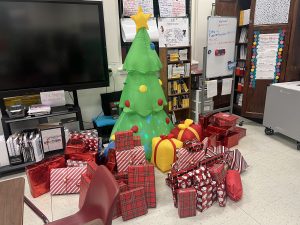 Booker T. Washington High School for the Performing and Visual Arts
Booker T. Washington High School for the Performing and Visual Arts Henry B. Gonzalez Elementary School
Henry B. Gonzalez Elementary School Trinity Heights Talented and Gifted Counseling Department
Trinity Heights Talented and Gifted Counseling Department
 Dual Language Department
Dual Language Department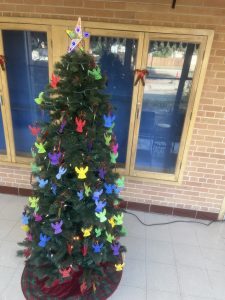 Victor H. Hexter Elementary School
Victor H. Hexter Elementary School
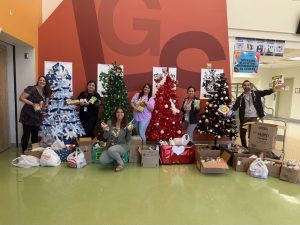 Larry G. Smith Elementary School
Larry G. Smith Elementary School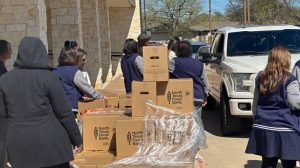 Buckner Terrace Montessori
Buckner Terrace Montessori Dallas ISD Police Department
Dallas ISD Police Department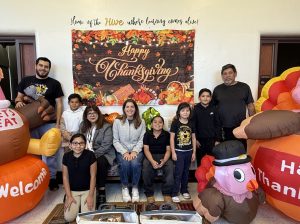
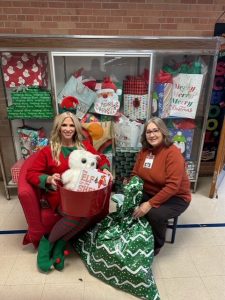 Martha Turner Reilly Elementary School
Martha Turner Reilly Elementary School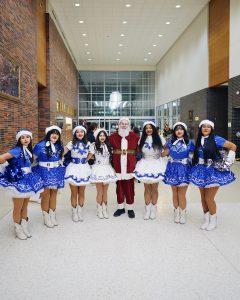 W.H. Adamson High School
W.H. Adamson High School 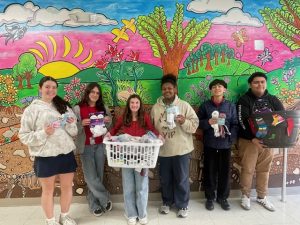 Eduardo Mata Montessori
Eduardo Mata Montessori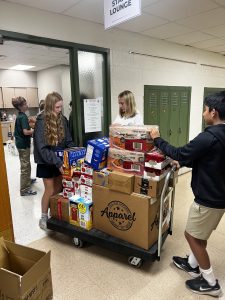 Sudie L. Williams Talented and Gifted Academy
Sudie L. Williams Talented and Gifted Academy
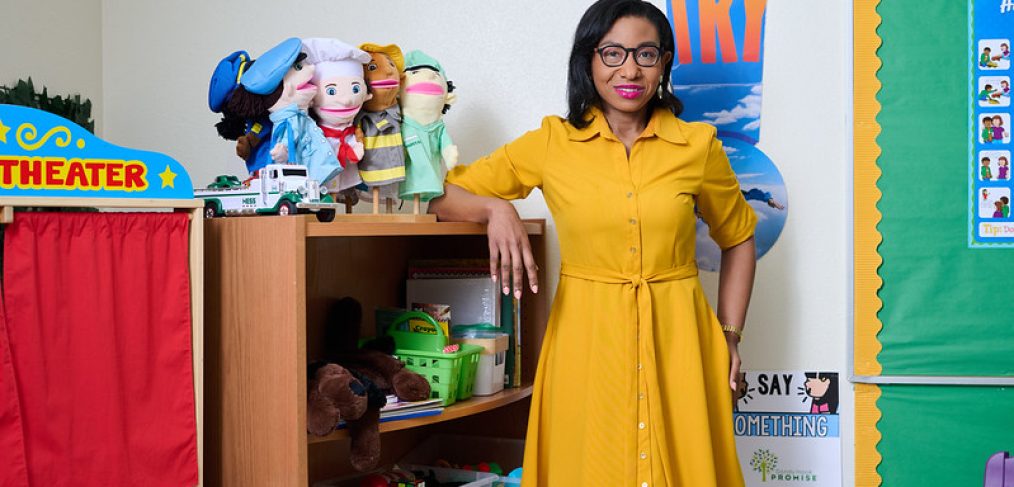
 “It’s a wonderful way to bring a personal touch to discovering college and make it more tangible,” McLaurin said. “Students can connect the reasons why people go to college to adults they know and see every day.”
“It’s a wonderful way to bring a personal touch to discovering college and make it more tangible,” McLaurin said. “Students can connect the reasons why people go to college to adults they know and see every day.”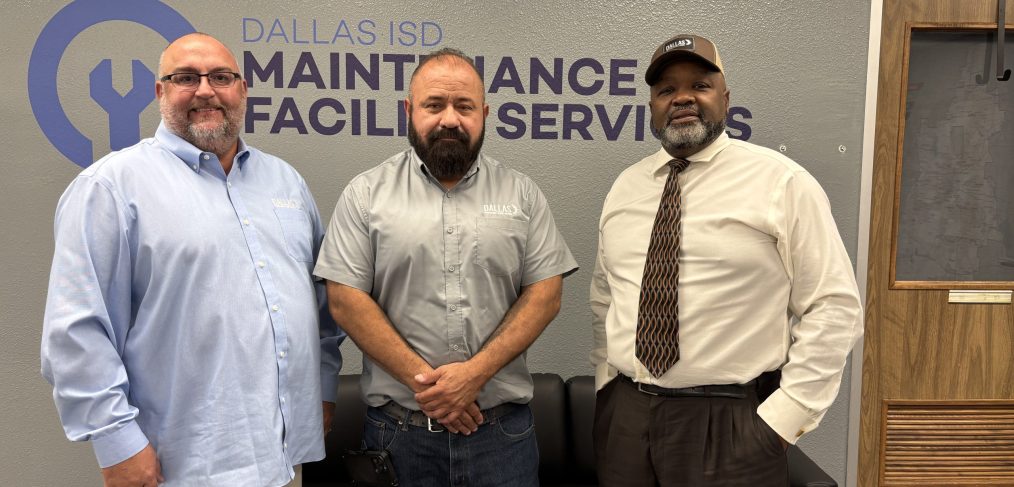



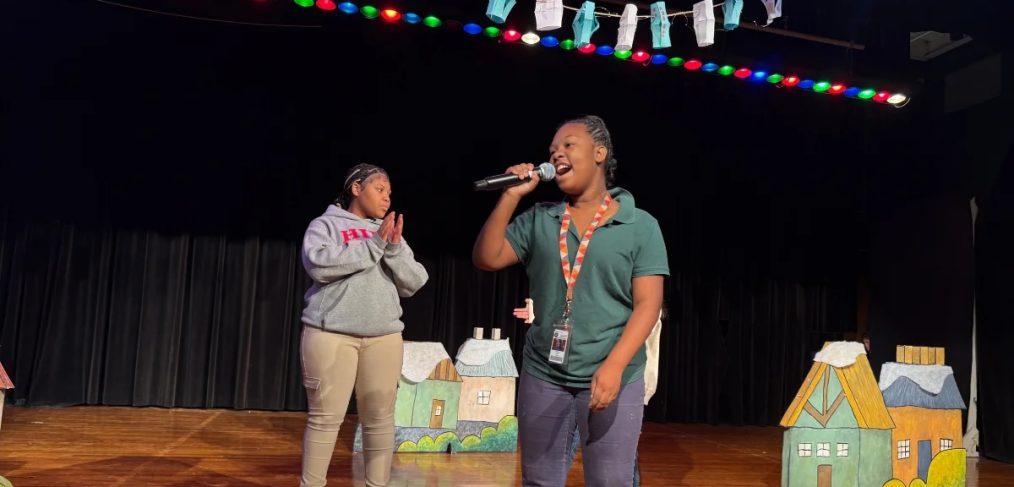
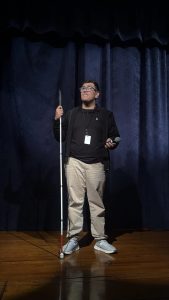 Eighth-grader Wilfredo M., who is visually impaired, will perform a monologue titled “The Gift I Can’t Wrap.”
Eighth-grader Wilfredo M., who is visually impaired, will perform a monologue titled “The Gift I Can’t Wrap.”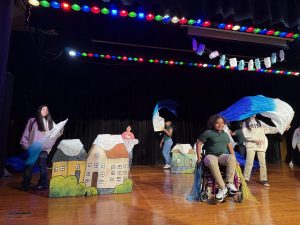 experience all opportunities, explore who they are, and build relationships.”
experience all opportunities, explore who they are, and build relationships.”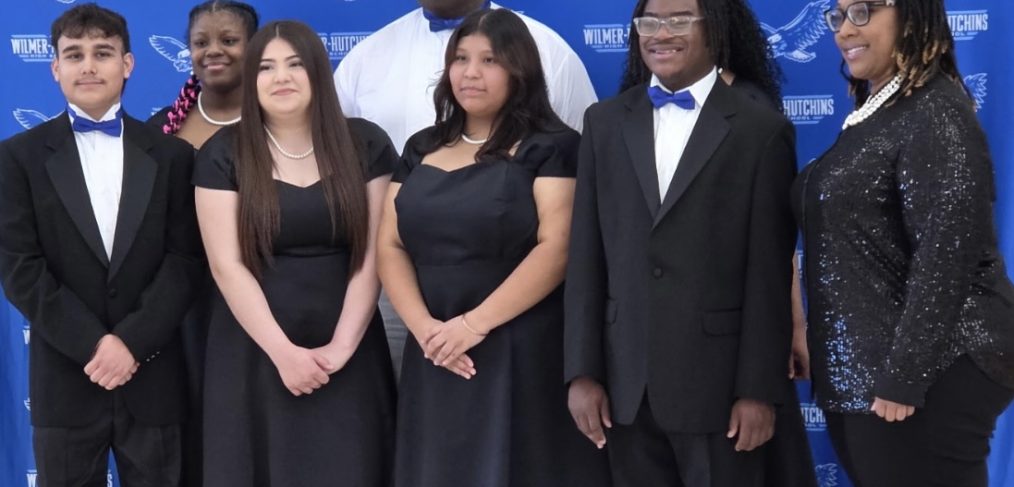
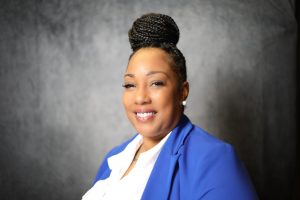 Wilmer Hutchins High School choir teacher Regiss Richards is growing the school’s choral program and shares a lifelong love of music rooted in early memories of hearing her father sing and growing up in Dallas ISD. Now, as an educator, Richards aims to ignite a similar spark in her students, teaching them self-expression, harmony, and confidence through song.
Wilmer Hutchins High School choir teacher Regiss Richards is growing the school’s choral program and shares a lifelong love of music rooted in early memories of hearing her father sing and growing up in Dallas ISD. Now, as an educator, Richards aims to ignite a similar spark in her students, teaching them self-expression, harmony, and confidence through song.